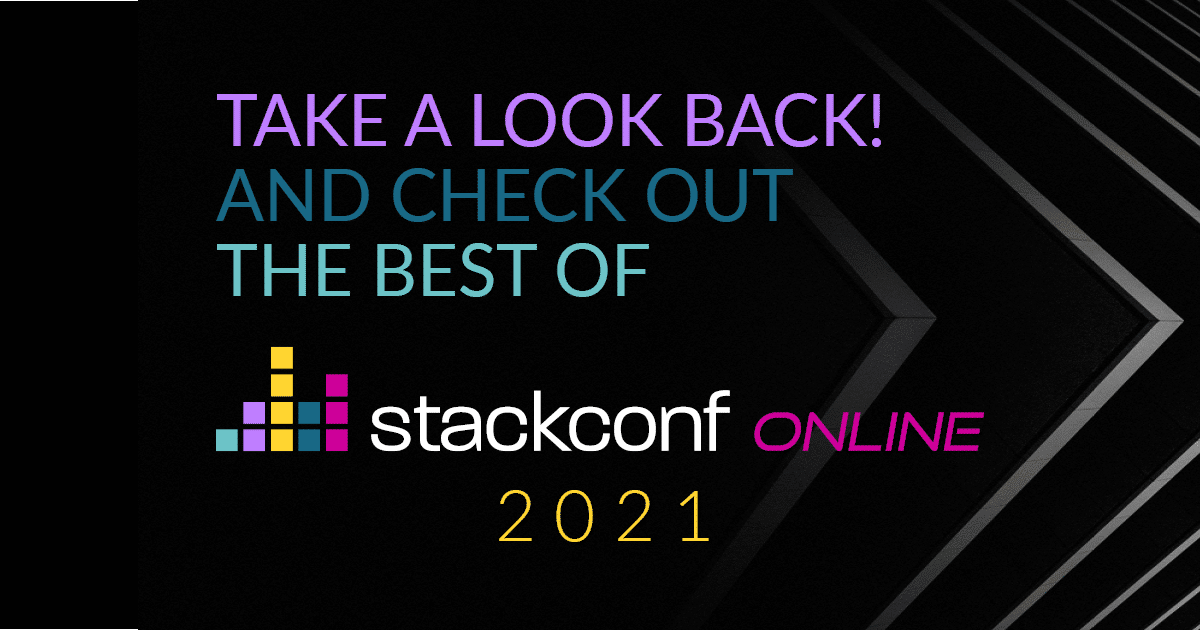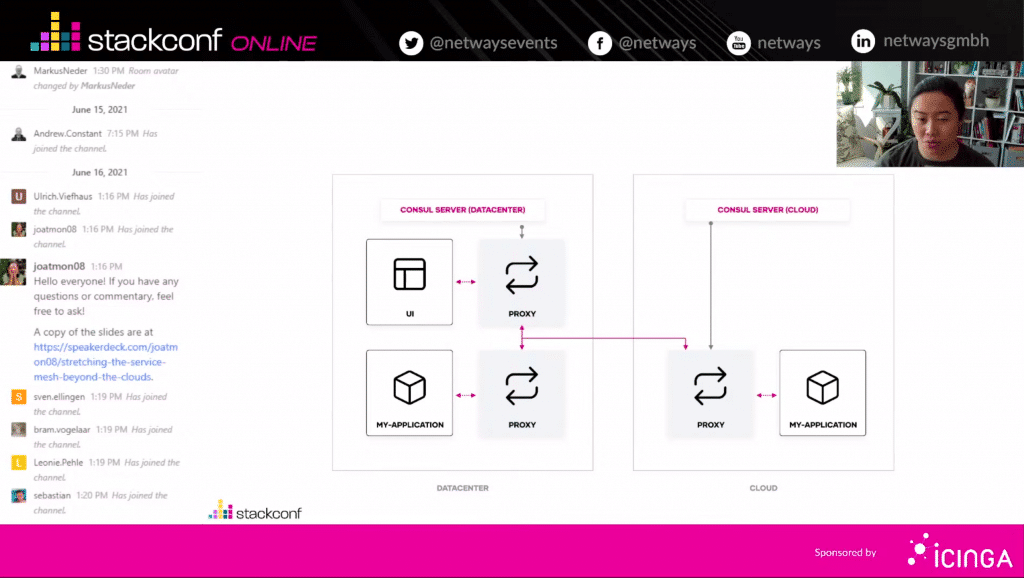- stackconf online 2021 | Why you should take care of infrastructure drift
- stackconf online 2021 | On-call done right: how even a developer can help
- stackconf online 2021 | Autoscaling with HashiCorp Nomad
- stackconf online 2021 | Continuous Security – integrating security into your pipelines
- stackconf online 2021 | Kubernetes Native Continuous Deployment with FluxCD, Flagger, and Linkerd
- stackconf online 2021 | Help, My Datacenter is on Fire
- stackconf online 2021 | Continuous Security – Integrating Security into your Pipelines
- stackconf online 2021 | Fuzzing: Finding Your Own Bugs and 0days!
- stackconf online 2021 | Monitoring Microservices The Right Way
- stackconf online 2021 | Policy-as-code in Kubernetes with Gatekeeper
- stackconf online 2021 | Stretching the Service Mesh Beyond the Clouds
- stackconf online 2021 | Stretching the Service Mesh Beyond the Clouds
- stackconf online 2021 | Spot the Anti-Pattern
- stackconf online 2021 | How DevOps changed the way we operate software
- stackconf online 2021 | We accidentally created a Cloud on our IBM Cloud
- stackconf online 2021 | The Tyranny of Taylorism and how to spot Agile BS
- stackconf online 2021 | First hand experience: How Nextcloud stayed productive during COVID-19
- stackconf online 2021 | Reference Architecture for a Cloud Native Digital Enterprise
- stackconf online 2021 | How we finally migrated an eCommerce-Platform to GCP
- stackconf online 2021 | Introducing Thola – A tool for Monitoring and Provisioning Network Devices
- stackconf online 2021 | Setup Min.io and Open Policy Agent for a multi purpose scientific platform
- stackconf online 2021 | GitOps: yea or nay?
- stackconf online 2021 | The Importance of Visuals in Teaching Code and Reducing Bias
- stackconf online 2021 | Enabling multi-cloud and breaking vendor lock-in with Cloud Sidecar
- stackconf online 2021 | Pragmatic App Migration to the Cloud: Quarkus, Kotlin, Hazelcast and GraalVM in action
- stackconf online 2021: Data Driven Security
- stackconf online 2021 | Platform as a Product
stackconf online 2021 is over and was a full success. It was all about open source infrastructure solutions in the spectrum of continuous integration, container, hybrid and cloud technologies. We’re still excited about all of our experts sessions and the large number of participants who joined us from all over the world. In the following you get an insight about one of our talks.
At stackconf online 2021 Rosemary Wang was with us, and she had a great topic on how to extend a service network beyond clouds. At the beginning she told us about her work at an organization, where different environments were used. These environments were running applications, some in AWS, data centres, Kubernetes, virtual machines, or Azure. The last thing that is missing is a way to control everything from one point.
So, what is needed is an infrastructure layer and an automation that controls the infrastructure layer. The combination of these is a service mesh. She showed us a solution with a Consul cluster, which is used in the datacenter and in the cloud.
This means that everything that is service to service goes through the proxies first. For example, in the data centre, the UI goes through the proxies to communicate with the application. Consul takes care of the configuration of the proxies and controls the rules and placement of where traffic is allowed to go within the environment.
The UI can also use the proxies to reach the application in the cloud. This allows cross cloud access. But aren’t there more problems with a service mesh? The answer is yes, you do have certain issues that you need to address, but you need to consider whether or not to avoid the service mesh. If you do not use a service mesh you end up with little automation and multiple checkpoints for the environments.
Several Types of Topologies
To get back on topic, we won’t try to get the service mesh across all environments, but Rosmary would like to show us the several types of topologies you have.
First, the service mesh is deployed in the cloud and then a network automation piece is added to synchronize. The benefits in the service mesh are controlled retries and error handling to non-service mesh and progressive delivery techniques such as canary, A/B testing and feature flagging. On the other hand, we have the benefits in the non-service mesh like automated control and no change to existing applications.
Let’s move on. After deploying the service mesh in the cloud, you deploy an ingress gateway that helps control traffic from the ingress to the cluster. The information it receives is transmitted to a Consul Terraform Sync, which configures the application load balancer.
How Consul Terraform Sync Works
Here Rosmary explains the advantages and disadvantages as well as how Consul Terraform Sync works. Afterwards there was a demo of how everything works together.
On the whole, I can say that Rosmary’s talk was very successful. I was able to learn a lot about the topic myself, even though I didn’t know a lot about it before. I hope the talk can convince you as much as it convinced me.
I could go on explaining in detail what Rosmary mentioned in her talk, but I would like to leave you with this.
If you want to learn more about the talk you can watch it in full length, I really recommend it.
Full talk and more from and about stackconf
Watch the the whole talk by Rosemary Wang:
stackconf 2022 will take place in Berlin. The final date will be announced soon. If you want to learn more about infrastructure solutions in advance you have the possibility to take look at our archive where you can find all slides and videos from this year’s stackconf.




















0 Comments